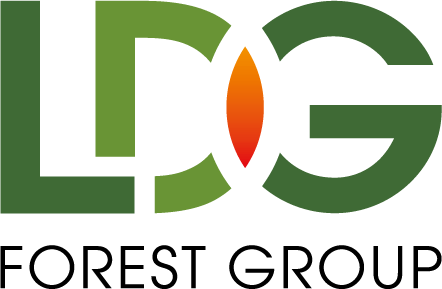The global wood pellet market has experienced significant growth in recent years, driven by a shift towards renewable energy sources and increasing environmental awareness. In 2024, the market was valued at approximately USD 13.6 billion and is projected to grow at a compound annual growth rate (CAGR) of over 16.4% from 2025 to 2034. This growth is propelled by the rising demand for sustainable and carbon-neutral energy alternatives.
As nations worldwide intensify their efforts to reduce carbon footprints and meet climate goals, wood pellets have emerged as a versatile solution for both industrial applications and residential heating. However, this promising market faces a complex landscape shaped by inflation pressures, geopolitical uncertainties, and supply chain constraints.
Current Market Overview
The wood pellet industry has established itself as a mature segment within the broader bioenergy sector, with production reaching approximately 48.8 million metric tons globally in 2023. Europe leads production, contributing around 50% of the global output, with the EU-27 countries producing 20.7 million metric tons. North America follows closely, producing 14.3 million metric tons, accounting for approximately 29% of global production.
Within Europe, Germany stands as the largest producer, with 3.7 million metric tons in 2023. Other significant European producers include Latvia and France. Europe remains the primary consumption market, absorbing approximately 30.1 million metric tons in 2023, representing about 62% of global production.
Emerging Asian markets, particularly Japan and South Korea, have significantly increased their pellet imports as part of their decarbonisation strategies. The residential heating segment has shown remarkable resilience, with sales of pellet stoves and boilers rising in response to volatile fossil fuel prices and growing environmental consciousness.
Impact of Inflation
Inflation has significantly disrupted the wood pellet market’s equilibrium, with substantial impact on production costs:
Feedstock Costs: Increased demand from primary users like sawmills has limited the availability of residuals, driving up prices and squeezing production margins. This competition has forced producers to seek alternative, often more expensive, biomass sources.
Transportation Costs: The surge in diesel fuel prices has substantially escalated transportation expenses, particularly for facilities dependent on trucking to deliver pellets to ports or distribution centers. These increased logistics costs directly impact the final price of wood pellets.
For retailers, these inflationary pressures have necessitated difficult pricing decisions between maintaining margins by raising consumer prices or absorbing costs to maintain market share.
Geopolitical Factors
Recent geopolitical developments have significantly reshaped the wood pellet landscape:
Russian-Ukrainian Conflict: The 2022 invasion of Ukraine by Russia triggered widespread sanctions affecting exports from Russia, Belarus, and Ukraine. Prior to the conflict, these countries collectively contributed approximately 15% to the global wood pellet trade in 2021. The sudden reduction in supply created substantial market disruptions and price volatility.
European Energy Crisis: In response to reduced natural gas supplies, many European countries have strategically pivoted toward alternative energy sources, including wood pellets. This shift has intensified competition for available wood pellet supplies in an already tight market.

Supply Chain Challenges
The combined effects of inflation and geopolitical tensions have created significant supply chain vulnerabilities:
Price Volatility: Fluctuating prices have become a defining characteristic of the current market, forcing businesses to make difficult decisions about inventory purchases and pricing models. Many retailers have implemented dynamic pricing systems or shortened price guarantees.
Supply Chain Disruptions: The interruption of supply from key exporting countries has necessitated the identification of alternative suppliers at higher costs. These disruptions have highlighted the vulnerability of long-distance supply chains and prompted retailers to diversify their supplier networks.
Retailers also face constraints in warehousing capacity and transportation bottlenecks at major ports and rail terminals, extending lead times and increasing carrying costs.
Market Opportunities
Despite the challenges, current market dynamics have created several compelling opportunities:
Increased Demand for Renewable Energy: The global emphasis on reducing carbon emissions has heightened interest in renewable energy sources, including wood pellets. Retailers can position their products as environmentally responsible alternatives to fossil fuels, tapping into growing environmentally-conscious consumer segments.
Market Expansion: As countries worldwide seek sustainable energy solutions, entirely new markets are emerging for wood pellet retailers. Asia-Pacific regions have demonstrated rapidly increasing demand, while regions experiencing high energy costs are increasingly open to alternative heating solutions.
Retailers can also explore diversification into complementary product lines, such as pellet stoves and boilers, creating bundled offerings that provide comprehensive heating solutions rather than just the fuel source.
Strategic Recommendations
To navigate this complex landscape successfully, retailers should consider implementing several strategic approaches:
Diversify Supply Chains: Establish relationships with multiple suppliers across different geographic regions to mitigate disruption risks from any single source.
Implement Advanced Inventory Management: Adopt sophisticated inventory management systems that can respond dynamically to market conditions and consider expanded storage capacity during periods of lower prices.
Enhance Customer Education: Develop materials that help consumers understand the economic and environmental benefits of wood pellets compared to alternatives.
Develop Value-Added Services: Create differentiation through services such as automated delivery scheduling, loyalty programs, and technical support for pellet-burning appliances.
Leverage Digital Marketing: Utilise targeted strategies to reach environmentally conscious consumers actively searching for sustainable heating alternatives.
Leveraging AI Technologies
The integration of artificial intelligence offers retailers powerful tools to navigate market challenges:
AI Powered Demand Forecasting: Machine learning algorithms can analyse historical sales data alongside weather patterns, energy prices, and economic indicators to predict demand fluctuations with remarkable accuracy.
Predictive Supply Chain Management: AI systems can continuously monitor global supply chains, identifying potential disruptions before they impact operations by analysing shipping data, production reports, and geopolitical developments.
Dynamic Pricing Optimisation: AI pricing engines can adjust retail prices in real-time based on supply costs, competitor pricing, and consumer demand elasticity, helping retailers maintain margins during volatile periods.
Customer Segmentation and Personalisation: AI analytics can identify distinct customer segments based on usage patterns, price sensitivity, and environmental priorities, enabling targeted marketing campaigns.

Future Outlook
The wood pellet market is likely to continue its growth trajectory, driven by several key trends:
The ongoing energy transition will further solidify wood pellets’ position as an important bridge fuel, particularly in regions with strong climate policies. As carbon pricing mechanisms become more widespread, the comparative economic advantage of wood pellets over fossil fuels will likely strengthen.
Technological advancements in pellet production may help address current supply constraints by improving efficiency and enabling the use of a wider range of biomass feedstocks.
Regulatory frameworks will continue to evolve, with sustainability certification becoming increasingly important for market access. Retailers who proactively adapt to these changing requirements will gain competitive advantages.
Market Leadership: LDG Forest Group
Among the companies positioned to thrive in this evolving marketplace, LDG Forest Group stands out as a market leader. By implementing innovative supply chain solutions and embracing AI driven forecasting technologies, LDG has successfully navigated recent market volatility while expanding its footprint in emerging markets. Their commitment to sustainability certification and transparent sourcing has resonated with environmentally conscious consumers, while their investments in multi-regional supply networks have enhanced resilience against geopolitical disruptions. As the industry continues to mature, LDG Forest Group’s integrated approach combining production efficiency, strategic distribution partnerships, and consumer-focused retail strategies exemplifies the adaptability required to capitalise on the wood pellet market’s growth potential.
In conclusion, while the wood pellet market faces significant challenges, it simultaneously offers substantial opportunities for strategic retailers. By effectively managing risks while capitalising on growing demand for renewable energy solutions, businesses can thrive in this dynamic marketplace. The path forward requires adaptability, customer centricity, and a commitment to sustainability qualities that industry leaders like LDG Forest Group continue to demonstrate.

